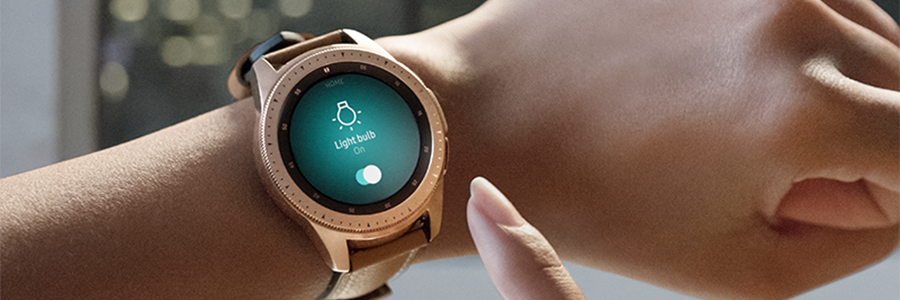
With technology advancing at a rapid rate and business-critical mobility becoming more important than ever, it comes as no surprise that the next big disruption in the workplace is going to be wearable devices. This presents exciting opportunities for businesses, but also new challenges. By 2020, it is expected that 75 million wearables will have entered the workplace. Statistics show that by connecting workers to one another and to resources, 50% of companies expect to see a boost in productivity. Where will this boost come from? Let’s take a look at some of the key areas that wearable devices are impacting the future of the workplace.
Key Benefits of Wearable Devices in the Workplace
Personalized and effective training
By leveraging wearable technology in the workplace, organizations can streamline their training to be more efficient and tailored to the specific employee receiving the training. Wearable technology also boosts performance, improves employee satisfaction and increases knowledge retention amongst employees. Wearables allow organizations to create immersive task simulations for training purposes. Wearables will take scenario training to an entirely new level by placing employees in simulated situations that closely mimic what a day on the job will truly look like. Instead of watching actors deal with fake situations on a television screen, employees will have the opportunity to work through the scenarios themselves, venture down their own decision-making paths and chart their own courses of action. The days of one-dimensional presentations are over as we usher in a new era of interactive training.
Wearables also allow for a more in-depth product knowledge training experience. Rather than asking employees to read various sales sheets, product sheets or corporate brochures, wearables can give employees three-dimensional training on how various products work. They can test out products in real-life scenarios without ever leaving the building. This type of immersive training will ensure employees know everything (specs, benefits, etc.) there is to know about a product and its use cases, helping them sell, advise or troubleshoot products more effectively.
Streamlined processes and increased productivity
Wearable technology will also help organizations increase their efficiency and productivity in several ways. There’s a larger demand for products to be made faster and cheaper in any industry. Consumers are looking for the easiest and quickest ways to buy products and services. Wearables can help speed up production costs, cut down on operational expenses and alleviate unnecessary strain on workers.
These devices can help automate previous manual processes, help to develop a more hands-free environment and collect and share data on a local network. For example, leveraging wearable technology to design and test new products in simulated environments can increase design accuracy and enable organizations to identify and rectify any issues before products are released. This also removes the need for physical design prototypes, cutting down on development time and production costs.
Safety and situational awareness
By gaining insights into their business operations in real-time, wearables allow employers to make smarter decisions and take a more proactive approach to ensuring the safety of their employees. Wearable devices can be personalized and configured to a worker’s exact needs and specifications. They can also be equipped with haptic response capabilities that employers can use to inform workers right away if they are operating in an unsafe manner. Afterall, one bad twist or bend could result in a workplace injury. Lower lumbar injuries are the number one reported injury for workers compensation claims.
The data capture capabilities of wearable technology can help determine which tasks workers are performing incorrectly, and which may be contributing to inefficiency or poor performance. Organizations can also produce daily, weekly, monthly and yearly reports/scorecards to track performance and identify trends. This can help in targeting risks and mitigating those risks to decrease the potential for injuries and other safety incidents. This can help identify high-risk employees and situations so employers can intervene accordingly with additional training or tools, helping to combat injuries, fatigue and lost productivity.
Challenges and concerns related to wearable technology
When implementing wearable technology into your organization, you’re also introducing a new level of data collection and, as a result, a new area of security concern. It becomes increasingly important to protect the device and the data housed within the device from unwanted access, the same way you would protect employee information, financial records, etc. And security isn’t the only concern related with new IoT devices. Organizations will need to worry about compliance, management, updates and more.
The SOTI ONE Platform is the perfect solution to managing wearable technology, or any IoT device. Comprised of six unique and revolutionary solutions, the SOTI ONE Platform brings all your mobility needs into one easy-to-use platform, including industry leading Enterprise Mobility Management (EMM) solution, SOTI MobiControl. The SOTI ONE Platform can help break down organizational silos to eliminate downtime, build applications faster and manage all mobile and IoT devices in one place, including wearable technology.



